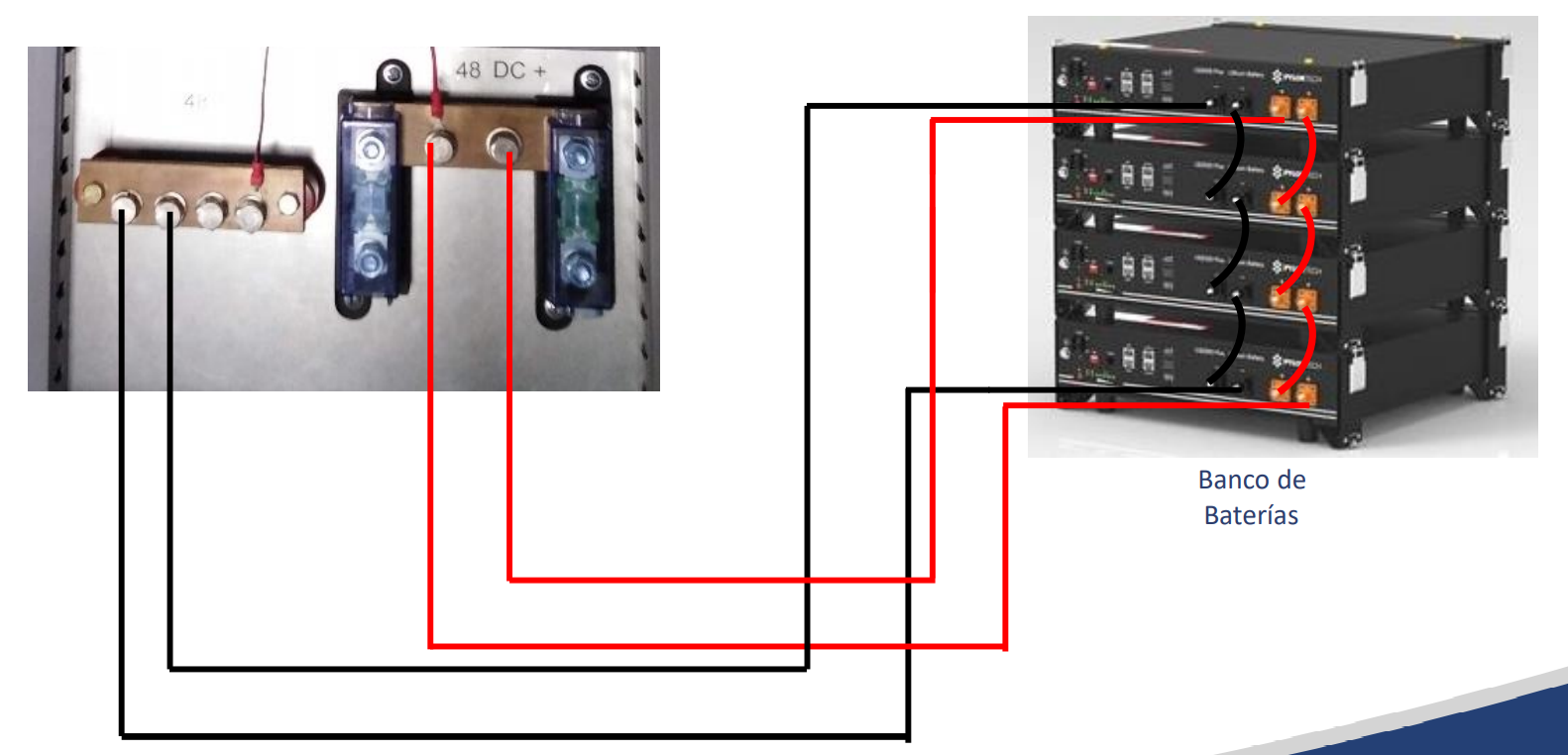I have 3x pylontech us3000c connected. Connection is done by one original pylontech cable. Question is if it's enough? Or how to connect next one cable? Thanks
Alex
This site is now in read-only archive mode. Please move all discussion, and create a new account at the new Victron Community site.
actualy I have like this :

so to be sure I must do it like this ? :

means add next wires on the place where is cap now ?
BMS set a charge/discharge limit to 111A. I have a multiplus II 5kW so I think discharge isn't a problém, but for charge I have a mppt 450/100 and 250/60 so charge can exceed 100A
You will find the batteries will limit the charge current within the system.
You can, in DVCC, set the max charge current to be a max of 100A to be sure.
Indeed, @Alexandra 's tip is right, but please note that the DVCC maximum charge current setting will, as specified by Victron, not be respected if you have ESS and grid feed-in active in the ESS settings.
So, if you do exceed 100 Amps and do grid feed-in, I would recommend using more than one set of cables, and wiring them like you proposed seems fine for 3 batteries (except for fusing).
Also make sure to not enclose "nicely" the Pylontech wires in tubes or shafts, as the 100 Amps rating is only for wires in open-air to cool efficiently (IEC installation method "E").
Btw, Pylonthech also specifies in their latest manuals that external fuses or circuit breakers capable of interrupting 15'000 amps short-circuit current be used (and MaxiFuses are not enough have only 1'000 amps ICU, I ended up using industrial HPC DIN00 fuses (DC specified ones) and 3-phase fuse-holders for that, only for the + side, as datacoms grounds are connected to - on Victron side).
fore fusing I'm using this 6way holder https://www.victronenergy.com/dc-distribution-systems/fuses-and-fuse-holders with 125A Mega fuse. When I will use second cable set, I want go down to 100A or 80A fuse per cable.
edit: but HPC DIN00 fuse is really big industrial fuse. Is there other one with holder for personal use ?
Indeed, my planed nice small busbar exploded in size, cost and time, especially that on Multiplus II 5000 side, the manual recommends 200A fuses, which means HPC DIN1. Once you have HPC DIN1 fuses and fuse-holder in your had, HPC DIN00 looks small, and Megafuses look like miniature.
There are smaller marine fuse holders and fuses, e.g. 778-ANL, but from what I saw, they have an ICU of 6000 Amps, which is better than the 1000 Amps of Megafuses, and enough for a single Pylontech US3000C battery (their short-circuit current is rated at 2500 Amps), but not for 3 of them in parallel, nor to the Pylontech specification in their latest manual (10000 Amps ICU for up to irc 3 units, 20000 Amps for more). So if you use ANL fuses, from an engineering point of view, you would need one per Pylontech battery.
Then there are much smaller circuit breakers (and not that much mor expensive) that can break 20 kAmps DC at <60V, but some of them are polarized and thus unsuitable for bi-directional current protection.
Schneider has suitable gear at reasonable price, for up to 63 Amps, so it's perfect for protecting smaller MPPTs, but not Multiplus nor Pylontech. Larger DC circuit breakers exist too, but more expensive. IMPORTANT: Do NOT use AC circuit breakers which are not specified for DC.
In all cases, also check with an authorized electrician for compliance with local safety regulations.
Wink: I wish Victron would come up with a "bit" bigger "Lynx"-style distributor for LiFePo4 battery short-circuit currrents, designing and building such a busbar with HPC fuseholders and copper bars is quite a job by itself!
60 People are following this question.